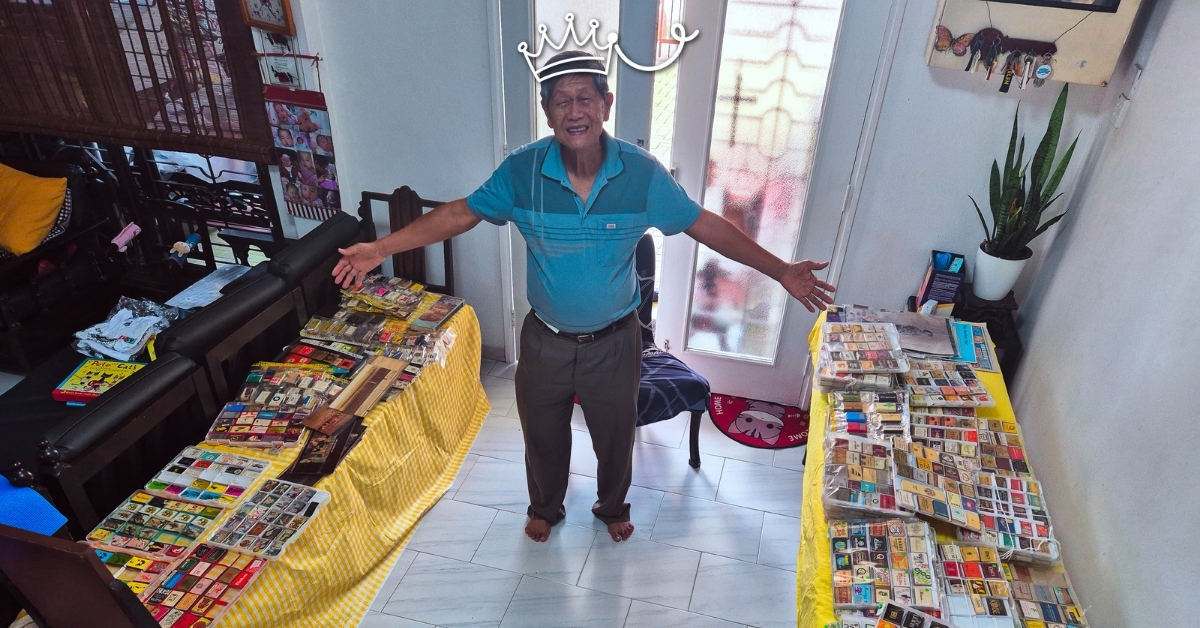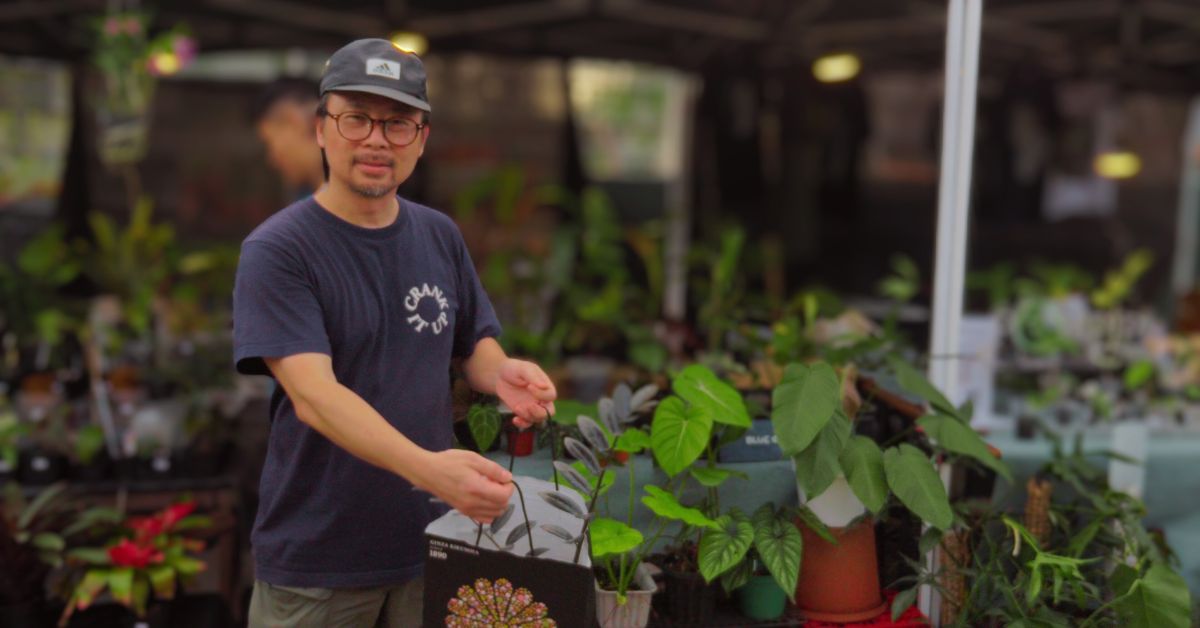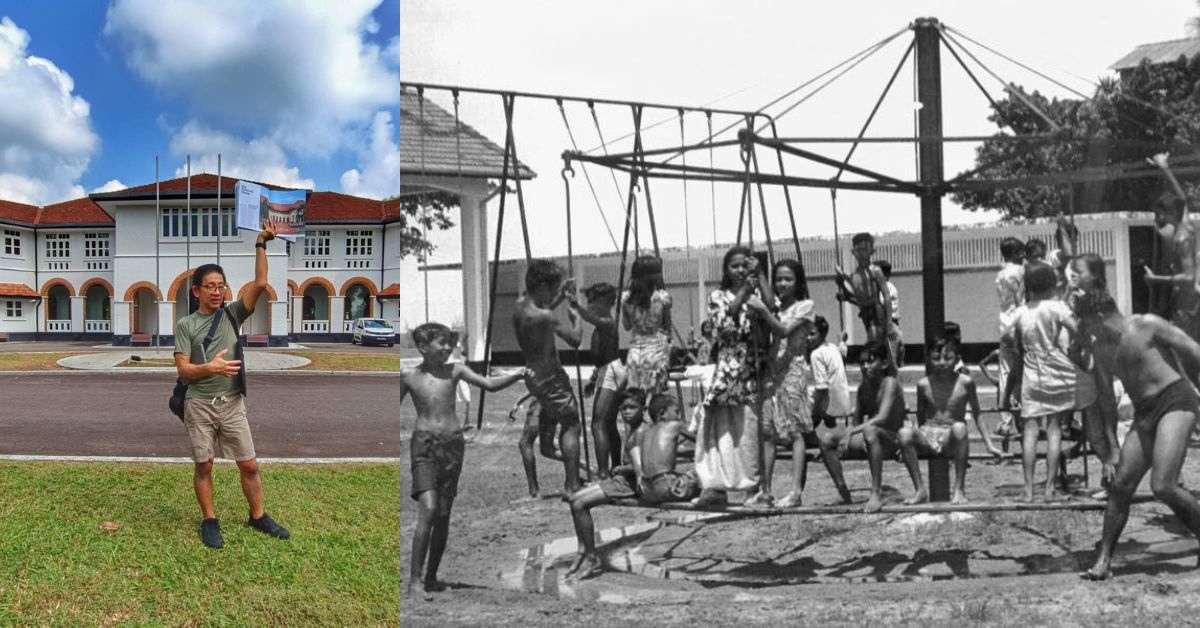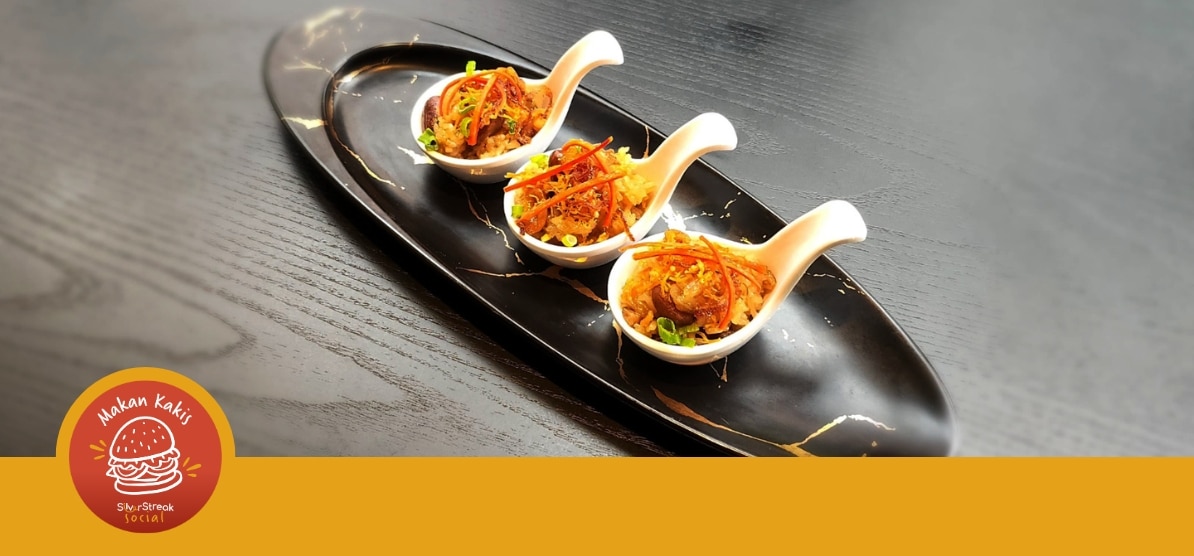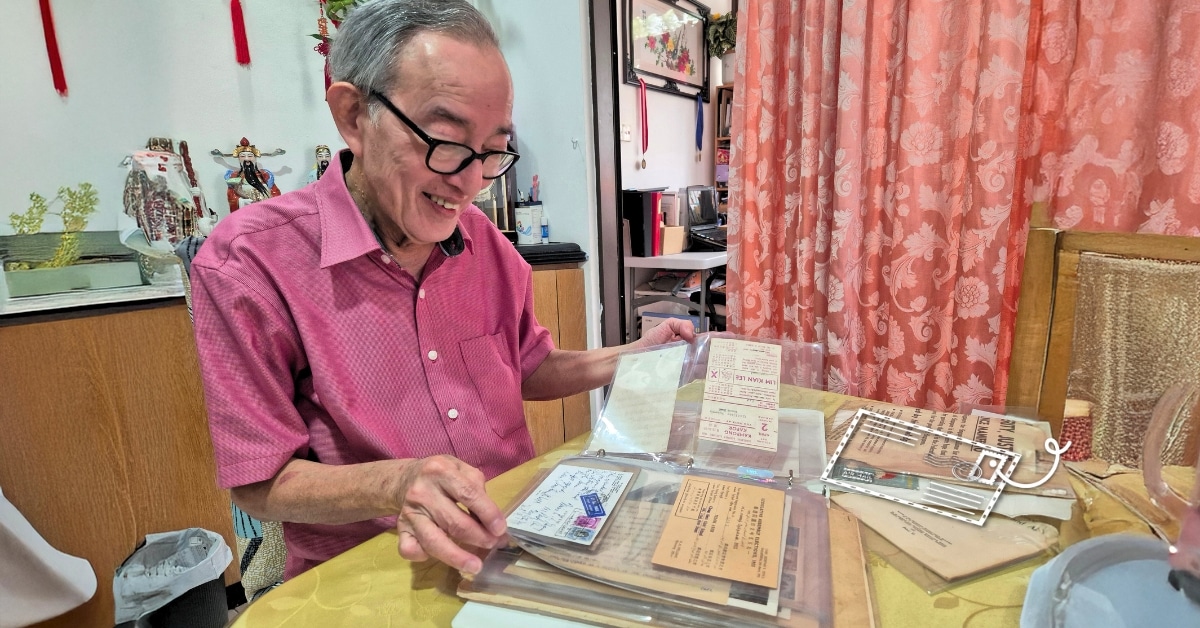
When Hong Tuck Kun first started soaking stamps off parcels he’d scavenged from Indian textile merchants, he never expected to end up with one of Singapore’s largest stamp collections.
Back then, he saw it as cheap, accessible fun for a 10-year-old schoolboy with plenty of time (and not so much money).
These colourful pieces of paper were adorned with all sorts of intricate designs. It really caught our eyes as teenagers, I think, because there simply weren't as many ways to see the world during that time,
explains the 72-year-old.
"Stamps were like a window into another world."
Better yet, they were in abundant supply and free to collect, especially when you’ve got convenient access to huge dustbins lining the alleys of High Street, as well as the now-defunct Hock Lam Street and Chin Nam Street, that are all just down the road from where Tuck Kun lived on Coleman Street.
Advertisement
The textile merchants would receive shipments of cloth wrapped in thick brown paper which were plastered with stamps, which they discarded in huge dustbins. I had a whole range to choose from, but I focused on high-value stamps which were bigger, and those picturing tigers, lions, elephants – I suppose these were the most interesting for a young boy,
he says.
I would bring them to school and all the other boys would be so jealous,
Tuck Kun adds with a laugh.
"But I never told them where I was getting my collection."
One of Singapore's most substantial stamp collections
Today, having accumulated stamps since he was in primary 3 “without ever stopping once”, the collection now fills more than 50 albums. And that’s just the stamps he’s bothered to sort.
The retired banker also collects postcards, letters, and newspaper clippings, reflecting the shift in his thematic focus from animals to the preservation of Singapore’s postal heritage.
Stamps and social history are very much interconnected,
he explains.
"You'll end up collecting what you can relate to, and throughout the years, I find myself invariably returning to where I stay – so, I followed my heart."
The most prized pieces in his collection are housed in a makeshift dry room with twin dehumidifiers and air-conditioners, each running 12-hour shifts. The remainder, which includes piles of unsorted postal correspondence, fills up another room in his Serangoon Garden home.
Though the silver’s never attempted to quantify his stamp collection, he figures that they probably number in the tens of thousands at least. Fellow longstanding members of the Singapore Stamp Club – of which Tuck Kun has been a part since 1968 – agree that he has one of the most substantial collections in the country.
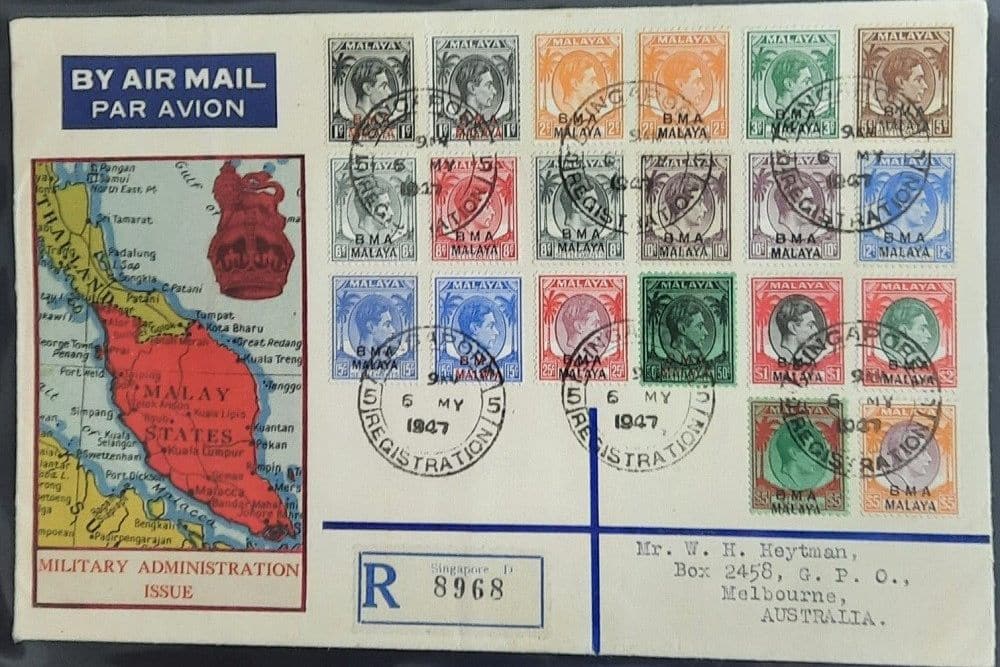
Funnily enough, the senior’s favourite piece in his entire collection isn’t even a stamp. When the Japanese Occupation of Singapore ended in 1945, the British Military Administration returned to rule amid a period of “utter chaos”.
While post offices had already reopened, stamps had yet to arrive from England, leading then-colonial administrator Major General Sir Herbert Ralph Hone to decide to allow postage for free. This decision – and the anticipated negative response from the British treasury – is detailed in a letter to his colleague now in the possession of Tuck Kun.
Other notable pieces include a congratulatory letter from former Singapore president Benjamin Sheares bearing the official Istana letterhead, as well as a letter from the officer-in-charge of British Prisoners of War (POWs) at Sime Road Camp urging soldiers to obey Japanese instructions.
Finding these kinds of extraordinary pieces are a luck of the draw. It’s useful to have a wide circle of friends who will surface potential pieces to you,
he says.
"Then it's up to you to see how much you want it."
Also read:
Staycation At Rochester Park: Exploring An Unexpectedly Charming Neighbourhood
A staycation at Rochester Park may not be top of mind for most, but as Jeffrey Yang discovers, there’s so much to discover in this charming area.
Singapore Clay Festival 2025: Hiroko Mita Chronicles Her Journey From Housewife To Pottery Artist
The young silver – who learnt how to shape clay from master potter Iskandar Jalil – will be selling her wares at the Singapore Clay Festival 2025.
Stamp collecting was once the “King of Hobbies”
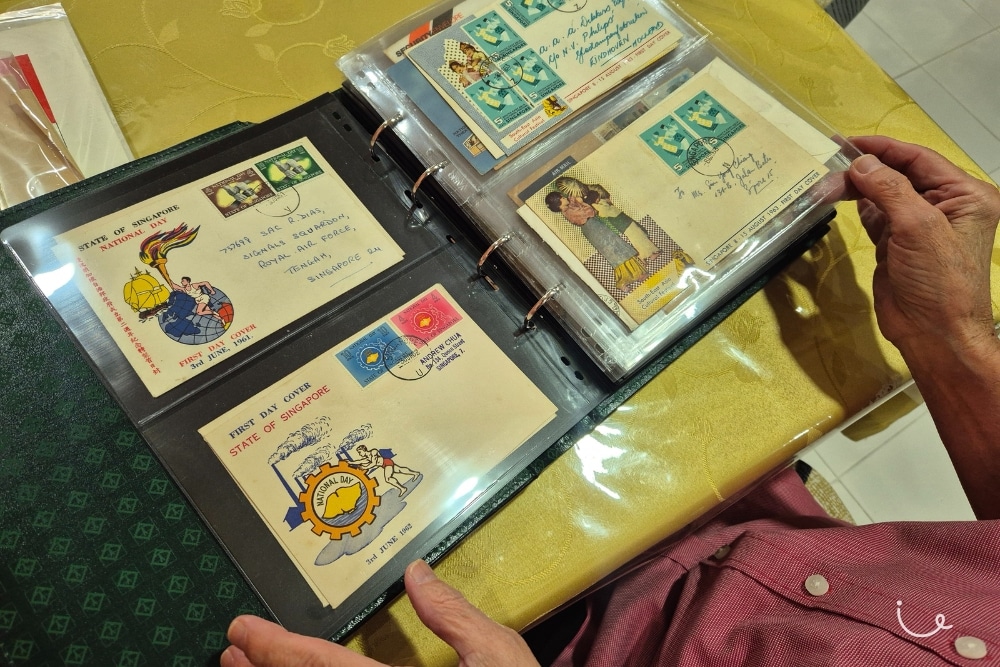
Collections like this are an increasing rarity. Stamp collecting, also known as philately, saw the height of its popularity in the 20th century. As Tuck Kun alluded to, it was cheap, accessible and compact, meaning even people living in smaller homes could easily participate.
While there are no estimates for the prevalence of stamp collecting in Singapore, international auction house Sotheby’s estimates that circa the mid-20th century, around one in seven families in the United States kept a stamp collection.
The Singapore Stamp Club was founded in 1940 amid that period of philatelic prominence, where it drove the national conversation on postage with exhibitions, conventions, and talks at local libraries.
Then, in 1971, an American named Ray Tomlinson sent the first digital letter. With the message QWERTYUIOP – the first row of letters on the standard English keyboard – the computer scientist kickstarted the slow death of what was then considered “the King of Hobbies”.
With the advent of email, physical mail volumes worldwide fell off a cliff, sending numerous postal services into a death spiral. Countries like the United Kingdom, Germany, Taiwan and yes, Singapore too, shuttered many physical post offices. Meanwhile, Denmark plans to cease all letter deliveries by the end of 2025.
What this means is less mail, less stamps, and less young people getting interested in philately. The Singapore Stamp Club, whose ranks have dwindled from more than a couple thousand to just 180 members, is almost entirely comprised of seniors.
Tuck Kun has accepted the decline of the hobby as part of the natural passage of time. Between his son and daughter, it is only the former who remains interested in stamps, though his thematic focus instead lies in postal mechanisation.
It was exciting for us because we could all do it, regardless of whether you were a child looking for a simple hobby, or a retiree who's picking it up again once he’s reached financial stability. Even if you have limited mobility, you can still collect stamps, as long as you have someone to go out and do the hunting for you (laughs).
He says,
Stamp collecting might come back again in the future, like how other vintage items are coming back – I wouldn’t know. I'm just happy to have enjoyed my journey with it,
the silver adds.

